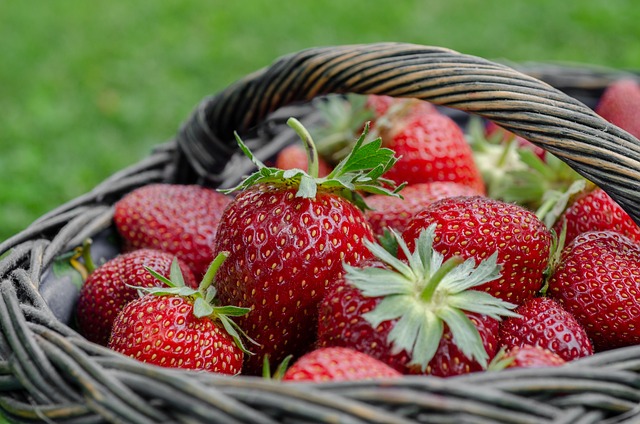 For the last several weeks, I have been trying to understand the complexities of how our bodies process sugar and fat. For many years I have been predominately living a low-carb lifestyle thus avoiding any form of sugar and starches. Then a couple of years ago the concept of higher health being achieved through metabolic flexibility started popping up in various health circles. What this means is that we are better off being able to use both fat and sugar equally for energy production and better off being able to switch between them as energy sources easily. This made sense to me on a survival-of-the-species level. The more adaptable you are to your environment, the greater your chances of survival.
For the last several weeks, I have been trying to understand the complexities of how our bodies process sugar and fat. For many years I have been predominately living a low-carb lifestyle thus avoiding any form of sugar and starches. Then a couple of years ago the concept of higher health being achieved through metabolic flexibility started popping up in various health circles. What this means is that we are better off being able to use both fat and sugar equally for energy production and better off being able to switch between them as energy sources easily. This made sense to me on a survival-of-the-species level. The more adaptable you are to your environment, the greater your chances of survival.
 So does that mean I should eat sugar or not? That is the question. As always, the answer is far more complex than that simple choice. Part of the complexity for me comes from the many different sources of information I look at. I make it complex because I want to see every subject from as many angles as possible. I don’t believe that looking at things from just one perspective will give me anything close enough to relevant truth to be useful in practice. That is part of the problem with looking at research papers. Researchers never actually have to participate and intervene with real patients over the long run. Most research is not even done on human beings.
So does that mean I should eat sugar or not? That is the question. As always, the answer is far more complex than that simple choice. Part of the complexity for me comes from the many different sources of information I look at. I make it complex because I want to see every subject from as many angles as possible. I don’t believe that looking at things from just one perspective will give me anything close enough to relevant truth to be useful in practice. That is part of the problem with looking at research papers. Researchers never actually have to participate and intervene with real patients over the long run. Most research is not even done on human beings.
 Let’s look at sugar metabolism. One thing we seem to know is that when sugar is present inside a cell, it competes with fats to make energy. When both are present, the cell will use up the sugar first. More than that, as the sugar is being used, it produces byproducts that signal the cell membrane to suck up even more sugar from the fluids around the cell and not fats. Similarly, if there are mostly fats in a cell as fuel, the metabolism of those fats produces byproducts that signal the cell membrane to close the doors to letting in more sugar. This produces what acts like insulin resistance and prevents any sugar floating around in the blood from being sucked up by the cells. This makes your blood sugar look high, so you look to be pre-diabetic. This is known as the Randle cycle.
Let’s look at sugar metabolism. One thing we seem to know is that when sugar is present inside a cell, it competes with fats to make energy. When both are present, the cell will use up the sugar first. More than that, as the sugar is being used, it produces byproducts that signal the cell membrane to suck up even more sugar from the fluids around the cell and not fats. Similarly, if there are mostly fats in a cell as fuel, the metabolism of those fats produces byproducts that signal the cell membrane to close the doors to letting in more sugar. This produces what acts like insulin resistance and prevents any sugar floating around in the blood from being sucked up by the cells. This makes your blood sugar look high, so you look to be pre-diabetic. This is known as the Randle cycle.
 When you eat too much sugar and the cells get filled with too much sugar, they shut down the doors for letting sugar in as sugar in excess is very toxic. This also produces insulin resistance and raises the blood sugar levels. So here is part of our answer – both too much fat and too much sugar can create insulin resistance and pre-diabetes. Do you see some of the complexity? Is it okay to eat sugar? Well, that depends on how much sugar you are eating and how much fat you are eating. Type 2 diabetes seems to be a message that you are eating too much or too often of either sugar or fat.
When you eat too much sugar and the cells get filled with too much sugar, they shut down the doors for letting sugar in as sugar in excess is very toxic. This also produces insulin resistance and raises the blood sugar levels. So here is part of our answer – both too much fat and too much sugar can create insulin resistance and pre-diabetes. Do you see some of the complexity? Is it okay to eat sugar? Well, that depends on how much sugar you are eating and how much fat you are eating. Type 2 diabetes seems to be a message that you are eating too much or too often of either sugar or fat.
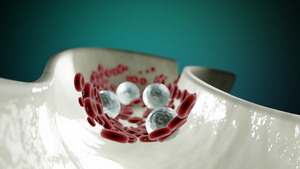 Usually, the body will try to avoid diabetes by storing excess fat and sugar in the blood. When the cells are full, the body has to do something with that stuff, otherwise it will turn into blood-colored frosting in our arteries. Unfortunately, there is only a limited amount of space in the body for storing sugar. It is turned into glycogen and stored in the liver and muscles. But there is only room for about 2000 calories worth of sugar – about one pound. Fat, on the other hand, is stored in our fat cells (adipose tissue), and we can store hundreds of thousands of calories there. Every pound of fat can carry roughly 3500 calories. The liver tries to convert the excess sugar into fat for storage, but this happens only after the body’s cells refuse the excess sugar and the blood levels climb above safe ranges.
Usually, the body will try to avoid diabetes by storing excess fat and sugar in the blood. When the cells are full, the body has to do something with that stuff, otherwise it will turn into blood-colored frosting in our arteries. Unfortunately, there is only a limited amount of space in the body for storing sugar. It is turned into glycogen and stored in the liver and muscles. But there is only room for about 2000 calories worth of sugar – about one pound. Fat, on the other hand, is stored in our fat cells (adipose tissue), and we can store hundreds of thousands of calories there. Every pound of fat can carry roughly 3500 calories. The liver tries to convert the excess sugar into fat for storage, but this happens only after the body’s cells refuse the excess sugar and the blood levels climb above safe ranges.
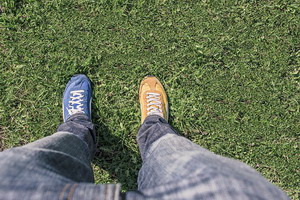 Another angle we have to look at is the different forms of sugar. The blood sugar we have been talking about so far is called glucose. Starchy foods are made up of lots of glucose molecules hooked together. The enzymes in your mouth and just below your stomach break these long chains of glucose apart into individual glucose sugar molecules for absorption into our bloodstream. Cane sugar, beet sugar, and various fruit sugars also contain another type of sugar called fructose. Our typical white table sugar is a 50-50 mix of fructose and glucose hooked together. Fructose is processed by the body very differently. It goes straight to the liver where it likes to create fatty liver and generate uric acid which attacks our kidneys. Fructose consumption is currently being blamed as a major cause of the epidemic of metabolic syndrome. The big finger is being pointed at high fructose corn syrup used in soft drinks and processed food. But agave syrup is much worse (80% fructose), and any white sugar is still 50% fructose.
Another angle we have to look at is the different forms of sugar. The blood sugar we have been talking about so far is called glucose. Starchy foods are made up of lots of glucose molecules hooked together. The enzymes in your mouth and just below your stomach break these long chains of glucose apart into individual glucose sugar molecules for absorption into our bloodstream. Cane sugar, beet sugar, and various fruit sugars also contain another type of sugar called fructose. Our typical white table sugar is a 50-50 mix of fructose and glucose hooked together. Fructose is processed by the body very differently. It goes straight to the liver where it likes to create fatty liver and generate uric acid which attacks our kidneys. Fructose consumption is currently being blamed as a major cause of the epidemic of metabolic syndrome. The big finger is being pointed at high fructose corn syrup used in soft drinks and processed food. But agave syrup is much worse (80% fructose), and any white sugar is still 50% fructose.
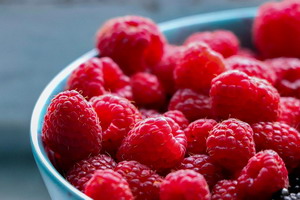 Back to our primary question, is it okay to eat sugar and/or fruit? Now that we have a little bit of background we can start to look at that question. Clearly, eating more sugar than our cells can burn is a bad idea. That creates insulin resistance which leads to diabetes and a whole host of other nasty outcomes. But on the other hand, eating some sources of glucose looks like it is okay, maybe. Eating lots of fructose looks to be a bad idea unless we want a fatty liver and destroyed kidneys. So we are having the old bit of wisdom coming into play – moderation in all things.
Back to our primary question, is it okay to eat sugar and/or fruit? Now that we have a little bit of background we can start to look at that question. Clearly, eating more sugar than our cells can burn is a bad idea. That creates insulin resistance which leads to diabetes and a whole host of other nasty outcomes. But on the other hand, eating some sources of glucose looks like it is okay, maybe. Eating lots of fructose looks to be a bad idea unless we want a fatty liver and destroyed kidneys. So we are having the old bit of wisdom coming into play – moderation in all things.
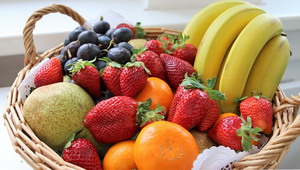 As I look into fruit specifically, I find that the fructose concentration varies a great deal between fruits. Fruits like berries, stone fruits, pineapple, and citrus seem to be low in fructose while apples, mangos, pears, grapes, watermelon, and dried fruit are high in fructose. Fructose is twice as sweet as glucose, so in general the sweeter the fruit is the more fructose it contains. I would think therefore that the lower fructose fruits are better for us to eat. Now there is some research that shows that certain coloring agents in the fruit called polyphenols have properties that help prevent sugar damage in the body. So in general the more color there is to the flesh of the fresh fruit, the less damage it will cause. Grains do not contain these polyphenols. They break down into sugar but without any of this protection on board. Plus being seeds they are well defended with plant toxins to inhibit mold and insects (and us). Fruit, on the other, hand is designed to attract being eaten as a way to disperse the seeds inside to other places in the environment. The fruit is designed to rot easily to provide a rich growing medium for the seeds within. The net result is that fruit is pretty easy to digest for most people. (Some people are sensitive to fructose and have to avoid it for digestive reasons.)
As I look into fruit specifically, I find that the fructose concentration varies a great deal between fruits. Fruits like berries, stone fruits, pineapple, and citrus seem to be low in fructose while apples, mangos, pears, grapes, watermelon, and dried fruit are high in fructose. Fructose is twice as sweet as glucose, so in general the sweeter the fruit is the more fructose it contains. I would think therefore that the lower fructose fruits are better for us to eat. Now there is some research that shows that certain coloring agents in the fruit called polyphenols have properties that help prevent sugar damage in the body. So in general the more color there is to the flesh of the fresh fruit, the less damage it will cause. Grains do not contain these polyphenols. They break down into sugar but without any of this protection on board. Plus being seeds they are well defended with plant toxins to inhibit mold and insects (and us). Fruit, on the other, hand is designed to attract being eaten as a way to disperse the seeds inside to other places in the environment. The fruit is designed to rot easily to provide a rich growing medium for the seeds within. The net result is that fruit is pretty easy to digest for most people. (Some people are sensitive to fructose and have to avoid it for digestive reasons.)
 Basically, I see it coming down to this. We were designed to function as hunter-gatherers. That means we were designed to eat a wide variety of foods. It is part of why humans rose to the top of the survival pyramid. We are omnivores – we eat everything. We can adapt to all sorts of environments and food availabilities. However, one thing we never had to face historically was long-term food abundance. We are facing that now and we are not handling it well. It is interesting that the number one finding in longevity research that consistently comes up as the best way to live longer is to eat less. Calorie restriction is the most powerful way to live longer. Yet, as we have seen in previous articles, we need to get enough protein to avoid frailty and enjoy health optimization.
Basically, I see it coming down to this. We were designed to function as hunter-gatherers. That means we were designed to eat a wide variety of foods. It is part of why humans rose to the top of the survival pyramid. We are omnivores – we eat everything. We can adapt to all sorts of environments and food availabilities. However, one thing we never had to face historically was long-term food abundance. We are facing that now and we are not handling it well. It is interesting that the number one finding in longevity research that consistently comes up as the best way to live longer is to eat less. Calorie restriction is the most powerful way to live longer. Yet, as we have seen in previous articles, we need to get enough protein to avoid frailty and enjoy health optimization.
 The message I am getting from all this so far is that we need to rotate around our food sources. If you are metabolically healthy, you can probably eat an even mix of protein, fats, and carbs and let your body figure it all out. If you are not metabolically healthy then you might have to apply some conscious intervention. One such intervention is to eat your carbs (fruits and starches) at just one consistent meal of the day and avoid fats in that meal. For other meals eat more proteins and fats and avoid carbs. The body works better with the protein being earlier in the day and the carbs later in the day. Non-starchy veggies and salads can fit in with any meal. Occasionally do a day with just the non-starchy veggies alone with no proteins or carbs, but a little fat. A part of a hunter-gatherer’s life was days when the hunting did not go so well and there was nothing to really eat but leaves and fibrous tubers. This lifestyle produced strong healthy bodies.
The message I am getting from all this so far is that we need to rotate around our food sources. If you are metabolically healthy, you can probably eat an even mix of protein, fats, and carbs and let your body figure it all out. If you are not metabolically healthy then you might have to apply some conscious intervention. One such intervention is to eat your carbs (fruits and starches) at just one consistent meal of the day and avoid fats in that meal. For other meals eat more proteins and fats and avoid carbs. The body works better with the protein being earlier in the day and the carbs later in the day. Non-starchy veggies and salads can fit in with any meal. Occasionally do a day with just the non-starchy veggies alone with no proteins or carbs, but a little fat. A part of a hunter-gatherer’s life was days when the hunting did not go so well and there was nothing to really eat but leaves and fibrous tubers. This lifestyle produced strong healthy bodies.
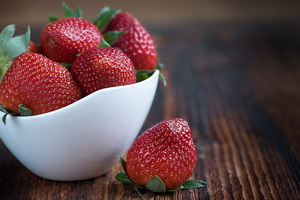 This is still an investigation in progress. My next test is to see how my body responds to eating just fruits after 4 in the afternoon.
This is still an investigation in progress. My next test is to see how my body responds to eating just fruits after 4 in the afternoon.
Take care,
David
